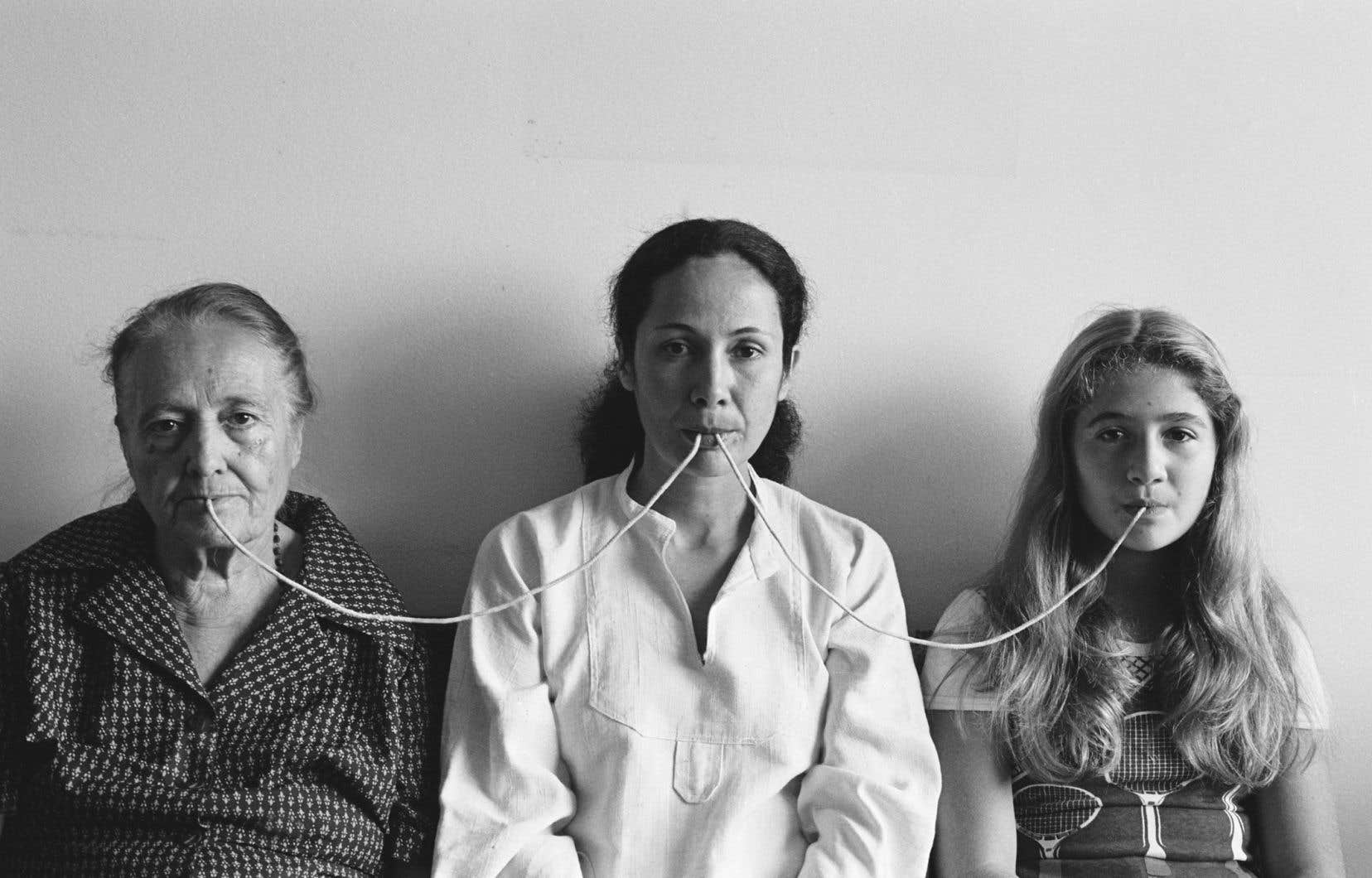It’s up to you, my darling
The title announces the snub specific to the cheeky spirit of Sophie Calle, invited to take over the Picasso museum. The venerable artist, known for the intimacy of her stories in images and words, was not shy: exit the Picassos of the Hôtel Salé. When they are there, it is behind opaque canvases. The sculpture The goat (1950) is recognizable. The paintings ? Forget that.
Sophie Calle magnifies the act of looking. The desire to see, visual memory and blindness are his themes, as in the “ghosts” series, where museum staff describe a work removed from the walls. The filling tips follow one another, until the artist puts his own goods up for sale. Humbug? Who knows.
Deadpan, but sensitive to the fragility of existence, the 70-year-old artist addresses death, including that of her mother, which she exposes while asking not to photograph her in her coffin. A fabulous autofiction narrator, Calle takes issue with the tributes to the cubist master on this fiftieth anniversary of his death. But apologizes: “Out of remorse, I offer you a tête-à-tête with Celestine. » The layout, a true theater of objects, is punctuated by such surprises. The one in front of this one-eyed character, considered a metaphor for creation, is a clever summary of it.
It’s up to you, my darling
By Sophie Calle. At the Picasso Museum, until January 7.
Bike Trip, USA, 1939
Photographer and cyclist, Ruth Orkin (1921-1985) achieved a goal that did not fit with the time when she was 17: crossing the United States by bike. Even if the bus or train sometimes comes to his aid, this is unusual. Note the year: 1939. She would have liked to tell her story, in images and press cuttings, in an illustrated album. It didn’t come to fruition. The Henri-Cartier-Bresson Foundation (FHCB), dedicated to the discovery of photographers of “humanist sensitivity”, unearthed it. The result is an exhibition that is disconcerting in its simplicity and the social scope of the photographic project.
The compositions exude freedom — “a surprising inventiveness of framing that has no equivalent,” according to Clément Chéroux, the renowned director of the FHCB. The future photojournalist seeks to emancipate herself and shows herself to be avant-garde even in the way she publicizes herself. Little known except for a now iconic image (An American Girl in Italy1951), Ruth Orkin is to be rediscovered.
Bike Trip, USA, 1939
By Ruth Orkin. At the Henri-Cartier-Bresson Foundation, until January 14.
Strike
The case of Marisol, the sculptor honored in Montreal this fall, is not unique. The story of Lee Lozano (1930-1999) is very similar to him. A spontaneous notoriety, in the New York of the 1960s. A strong signature, here in drawing and painting, marked by resistance to the canons. A sudden disappearance, this time almost by design. The one who retired in 1972 rests in an anonymous grave.
The exhibition Strikewhich covers his entire career, is part of the season American mythologies in place at the Bourse de Commerce (BdC), a historic building in the Pinault region. Bad omen: the overly extensive exposure of the eclectic and overrated Mike Kelley overshadows the rest of the program. Once again, Lozano is overshadowed by a male figure.
Strike hits — excuse the pun — straight away. The works of varied dimensions offer a dive into a realistic world (an almost technical drawing) and zany, even erotic, but above all a grotesque critique of phallic society. From the pop and surrealist languages of the beginnings, the work will move towards more abstract celestial representations, the last before the artist’s death.
Strike
By Lee Lozano. At the Bourse de Commerce, Pinault Collection, until January 22.
Long live Varda!
The exclamation point is clear: the retrospective Agnès Varda, who died in 2019, exalts her work, her life, her activism. Imbued with affection, not to say nostalgia, for the time when the lady wandered rue Daguerre, the exhibition places one foot in her cinema, the other in her photography.
We could criticize the Cinémathèque française for preferring to touch on everything rather than sticking to a few aspects. This is defensible, as the author of Cleo from 5 to 7 has crossed eras and revolutions, from its first title, La Pointe Courte (1954), which “prefigures” the New Wave, to its Palme d’Honneur at Cannes (2015), including its views on Castro’s Cuba and the Black Panthers’ California.
Built by themes and a little by chronology, Long live Varda! accumulates the jewels: extracts from films, appearances on TV (an exchange with Madonna there, an interview in Women of today here), archives and objects of all kinds. Agnès Varda’s voice resonates, unforgettable.
Long live Varda!
At the Cinémathèque française, until January 28
